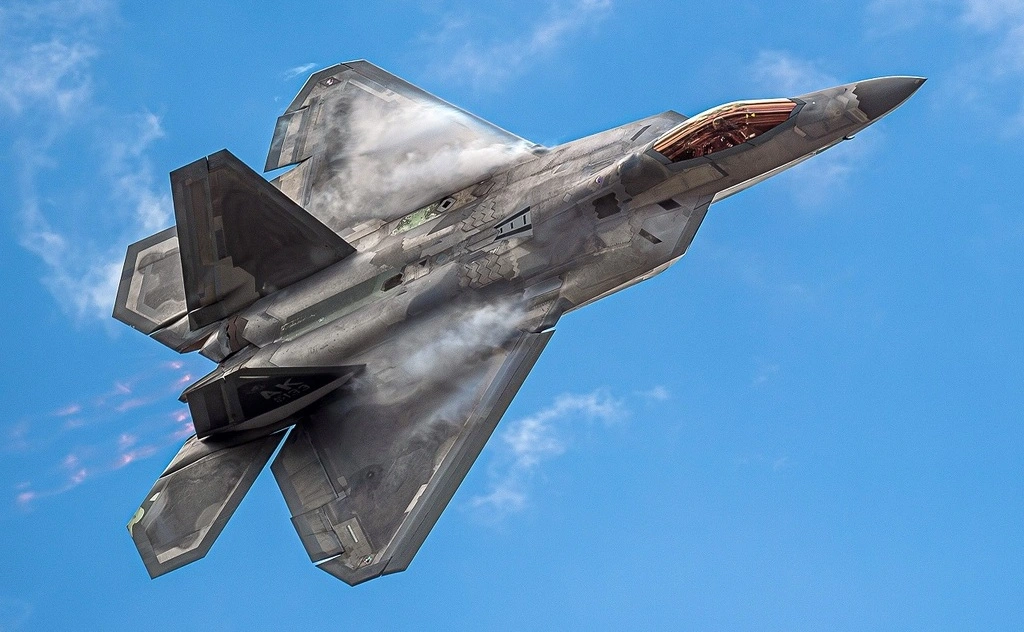Raytheon is looking closely at modernization plans for the F-22 fighter jet amid a delay in the U.S. sixth-generation fighter program. On Monday, September 4, Raytheon revealed its growing interest in updating the F-22 Raptor. The announcement came as the U.S. Air Force appears to be slowing its push towards a new generation of fighter aircraft, known as the Next Generation Air Dominance (NGAD) program.
Raytheon, a major U.S. defense contractor, is seizing the opportunity to keep the F-22 relevant. The company believes the pause in developing the NGAD could offer the F-22 a new lease on life. As one of the world’s most advanced fighter jets, the F-22 has been in service since 2005. While its capabilities remain formidable, technology in aerial warfare is constantly evolving. The F-22 needs modern upgrades to remain a powerful tool in the U.S. Air Force’s arsenal.
Raytheon’s modernization plans include several potential upgrades for the F-22. These upgrades may focus on improving its radar, electronic warfare systems, and weapons integration. The company’s goal is to enhance the F-22’s ability to detect and engage new threats. Additionally, Raytheon aims to make the F-22 more capable in future combat scenarios by ensuring it remains compatible with evolving technologies.
With the U.S. Air Force pausing its efforts on the sixth-generation fighter, the pressure is now on existing platforms like the F-22 to carry the load. The Air Force’s NGAD program aims to develop a new generation of fighter jets that can operate seamlessly with other aircraft, drones, and space assets. However, developing these advanced fighters requires time, resources, and careful planning. The pause on this program has made it necessary to focus on maintaining current aircraft capabilities.
Raytheon’s plan is seen as a way to extend the F-22’s operational life. The jet was originally designed for air superiority missions, but the new upgrades could expand its role. The potential improvements could make the F-22 more versatile in multi-role combat operations. This would allow it to perform missions that go beyond its original design, making it more valuable to the U.S. Air Force in the coming years.
Meanwhile, the F-22 has already undergone several upgrades since its introduction. These past improvements have included enhancements to its stealth capabilities, communication systems, and weapons capacity. The new modernization effort by Raytheon is expected to build on these previous upgrades. The goal is to ensure the aircraft remains effective against adversaries who are also rapidly advancing their military technologies.
The modernization plans are still in the preliminary stages, and specific details are yet to be fully revealed. However, Raytheon officials have hinted that the company is prepared to move quickly. The pause in developing the NGAD program has created a window of opportunity. Raytheon hopes to capitalize on this by bringing forward new ideas and technologies that could benefit the F-22.
This move by Raytheon also reflects a broader trend within the defense industry. Many companies are focusing on upgrading existing platforms rather than developing entirely new ones. The reason for this is partly due to budget constraints and the high costs associated with developing next-generation technology. Upgrading current systems like the F-22 is seen as a more cost-effective way to maintain military readiness and capability.
The Air Force’s decision to pause its sixth-generation fighter program has raised several questions. Some experts wonder if the delay might become permanent. Others believe the pause is necessary to reassess the program’s goals and ensure the next generation of fighters meets the evolving needs of modern warfare. For now, the pause gives companies like Raytheon the chance to bring innovative ideas to the table for existing aircraft.
Despite the pause in the sixth-generation fighter program, the U.S. Air Force is still moving ahead with other modernization efforts. This includes the continued development of the B-21 Raider, a new stealth bomber, and updates to the F-35 fighter jet. The Air Force’s strategy appears to be a mix of upgrading existing assets while carefully planning for future developments.
Raytheon’s focus on the F-22 comes at a critical time. The international security environment is becoming more complex, with rival nations like China and Russia rapidly advancing their military technologies. In this context, the U.S. cannot afford to let its current aircraft fall behind. By modernizing the F-22, Raytheon hopes to ensure that the U.S. Air Force remains ahead of potential adversaries.
The outcome of Raytheon’s modernization plans remains uncertain. The company will need approval and funding from the U.S. government to proceed. However, there is optimism within the defense community that these upgrades could significantly enhance the F-22’s capabilities. The pause in the NGAD program has provided a unique opportunity, and Raytheon is eager to make the most of it.
